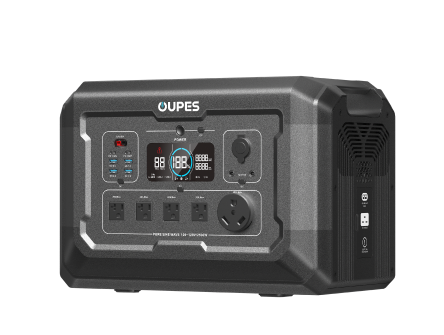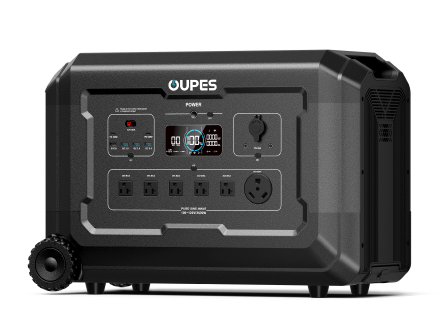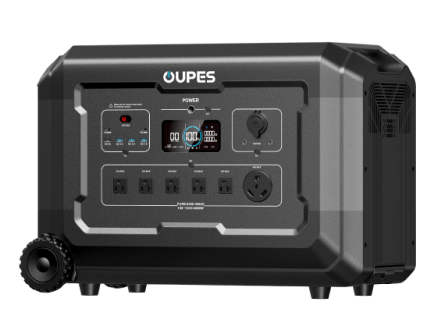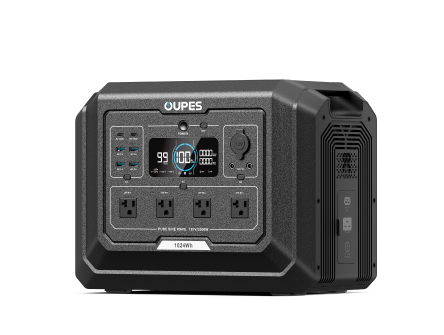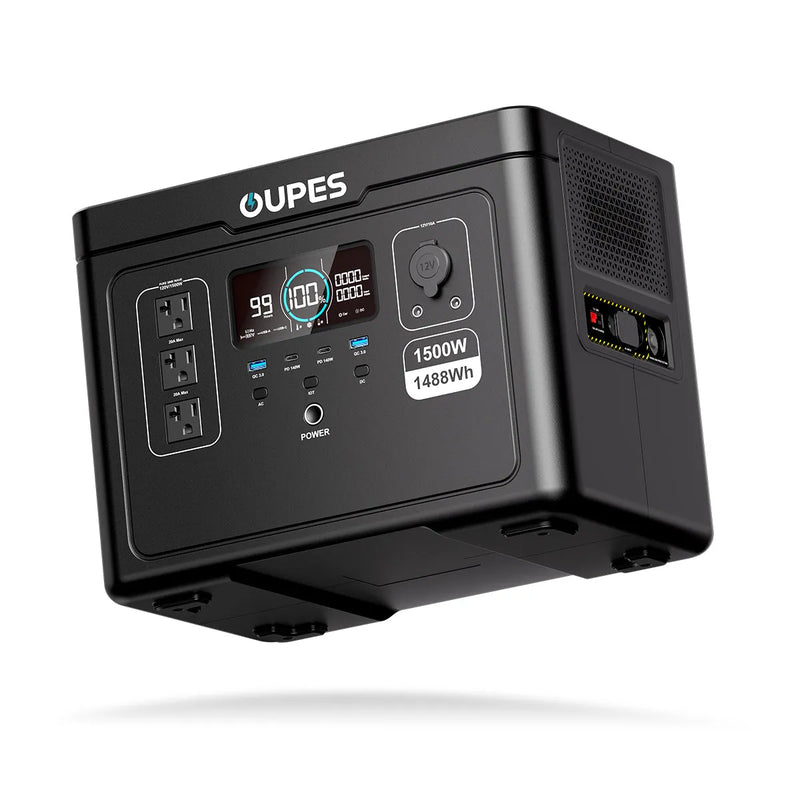
When the lights suddenly go out, one of the first questions people ask is: how long will it take for power to come back? Power outages can disrupt everything from cooking dinner to running life-saving medical equipment, and the uncertainty often adds to the stress. While some outages last just a few minutes, others can take days or even weeks to resolve, depending on the severity of the issue. Understanding why outages happen and what goes into restoring electricity can help you prepare for the next unexpected blackout.
In this article, we'll explore the different factors that affect how long it takes to fix a power outage, the typical restoration process, and how you can protect your home with practical solutions like solar-powered generators to avoid being left in the dark.
Common Causes of Power Outages
Power outages can be caused by a wide range of issues, from everyday equipment malfunctions to extreme weather events. The cause plays a huge role in determining how long repairs will take. For example, if an outage is caused by a small local problem like a blown fuse or a downed power line on your street, utility crews can usually restore service relatively quickly. However, larger-scale issues like hurricanes, ice storms, or wildfires can damage infrastructure across an entire region, requiring days or even weeks of repair work.
Natural disasters are among the most disruptive causes of outages. High winds can topple power lines, while heavy snow and ice can bring down trees onto electrical equipment. Flooding can damage substations and transformers, complicating the restoration process further. On the other hand, man-made issues such as car accidents hitting utility poles or planned maintenance activities may result in shorter, localized outages.
Understanding the root cause of an outage helps set realistic expectations for restoration. If the problem is localized, your power may return quickly. But when widespread damage occurs, patience and preparation become essential as crews work through extensive repair efforts.
The Process of Power Restoration
When an outage occurs, utility companies follow a systematic process to restore power safely and efficiently. The first step is to identify the cause of the outage through reports from customers, monitoring systems, and field inspections. Once the problem is pinpointed, crews prioritize repairs based on safety and impact. For example, they often begin by addressing issues at power plants, substations, and major transmission lines before moving on to smaller distribution lines that serve neighborhoods.
Safety always comes first in restoration efforts. Crews must ensure that damaged lines are de-energized to protect both workers and the public. Once conditions are safe, repairs can begin. Depending on the damage, this might involve replacing poles, restringing power lines, or repairing transformers. For widespread outages, utility companies often deploy crews from neighboring regions to speed up the process, but even then, restoring thousands of customers takes significant time and effort.
Because power restoration is such a complex process, timelines can vary dramatically. While minor outages may be resolved in a few hours, large-scale events with infrastructure damage can stretch repair times into days or weeks. This unpredictability underscores the importance of having backup plans in place at home.
Factors That Affect How Long Outages Last
Several factors influence how long it takes to fix a power outage, and understanding them can help you prepare for the worst-case scenario. The first factor is the scale of the outage. Widespread outages affecting thousands of customers will naturally take longer to resolve than small, localized incidents. Weather conditions also play a role, as ongoing storms or flooding may delay repair crews from even reaching damaged areas safely.
The accessibility of damaged equipment is another major factor. Some outages occur in urban areas where equipment is easier to reach, while others happen in remote or difficult-to-access locations, making repair efforts more challenging. Additionally, the availability of repair crews and equipment impacts restoration times. During large disasters, utility companies may face shortages of poles, wires, or transformers, slowing down recovery.
Finally, regulatory and safety requirements can influence timelines. Crews must adhere to strict safety protocols, which can lengthen the repair process but ensure that power is restored without putting lives at risk. Taking all of these factors into account highlights why outage restoration times vary so much from one situation to another.
How to Prepare for Power Outages at Home
Since you can never predict exactly how long a power outage will last, preparing your home in advance is the best way to minimize disruptions. Start by stocking up on essential supplies such as bottled water, non-perishable foods, flashlights, and batteries. Having a first aid kit and necessary medications readily available ensures your family's health needs are covered even during extended outages.
One of the most effective ways to prepare is by investing in a backup power solution. Solar-powered generators, like those from OUPES, provide a reliable and eco-friendly source of energy during blackouts. Unlike gas generators, solar options are quiet, safe to use indoors, and don't rely on fuel supplies that might be difficult to access during a disaster. They can power essential devices such as phones, laptops, medical equipment, and even small appliances, giving you peace of mind when the grid goes down.
By preparing in advance, you can maintain comfort and safety even when repair crews need days to restore power. The goal is not just to wait out the outage, but to continue life as normally as possible until service is restored.
Final Thoughts on Power Outage Restoration
Power outages are unpredictable and disruptive, but understanding the restoration process and the factors that affect repair times can help ease the uncertainty. While some outages may be resolved quickly, larger and more complex situations can take days or even weeks to fix. That's why personal preparation is so important.
By stocking essential supplies and considering backup solutions like solar-powered generators, you can protect your household from the worst effects of prolonged outages. In the end, while you may not have control over how quickly the lights come back on, you do have the ability to ensure your home remains safe, comfortable, and resilient in the face of unexpected blackouts.

